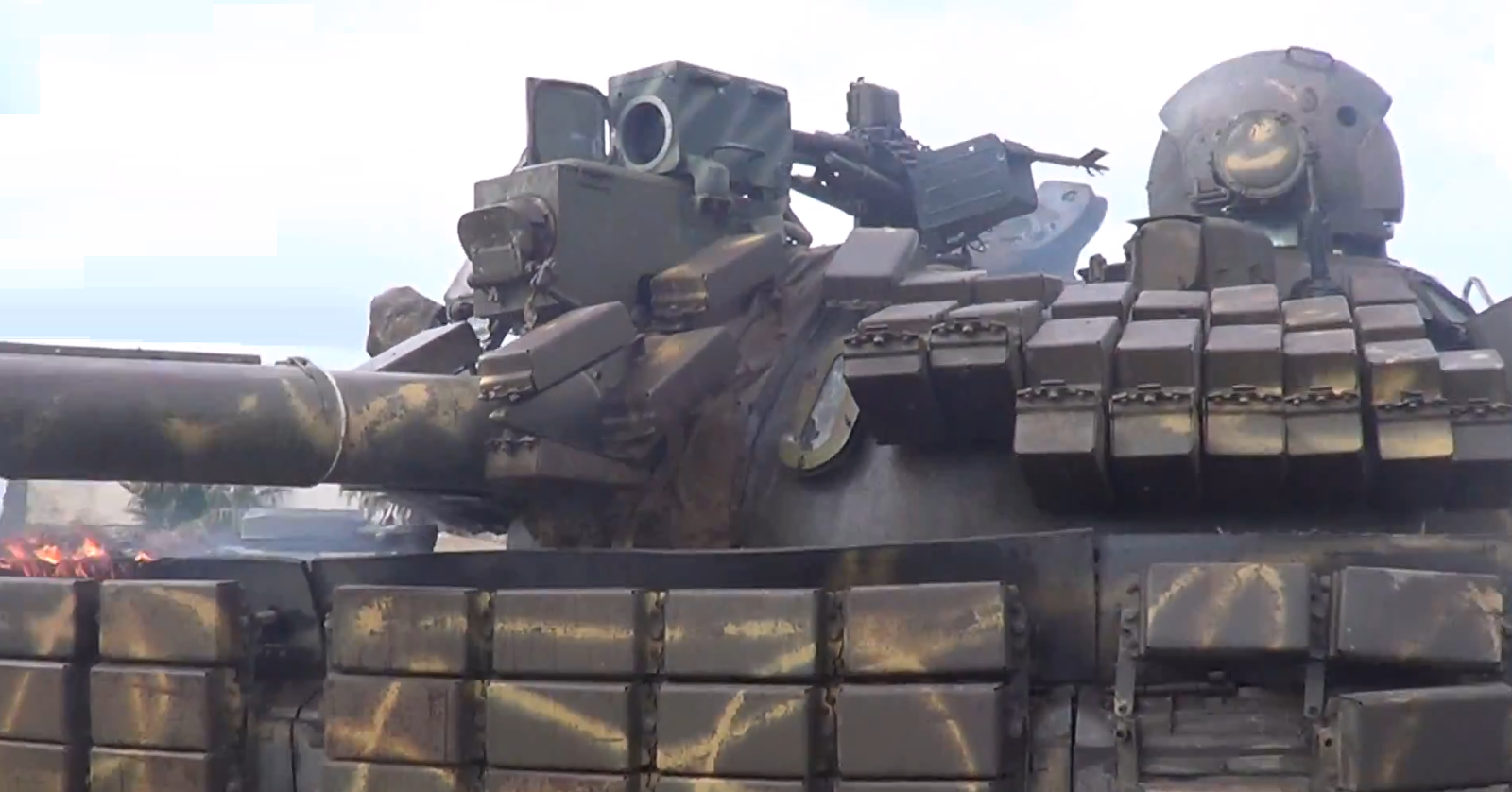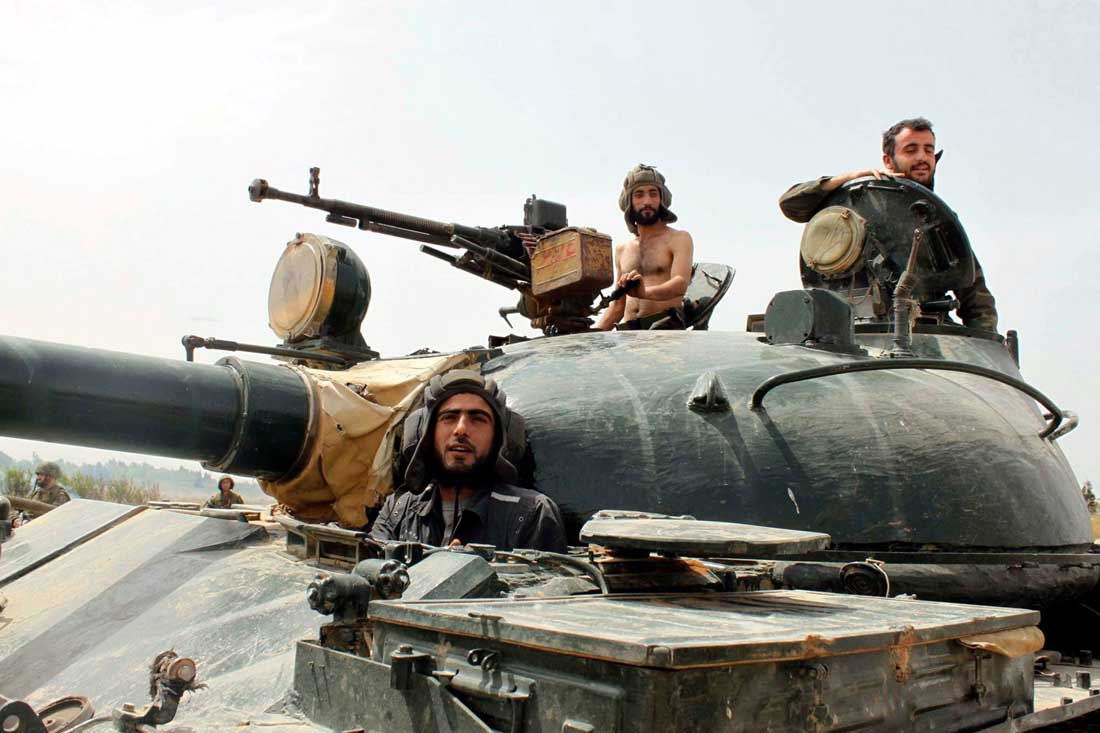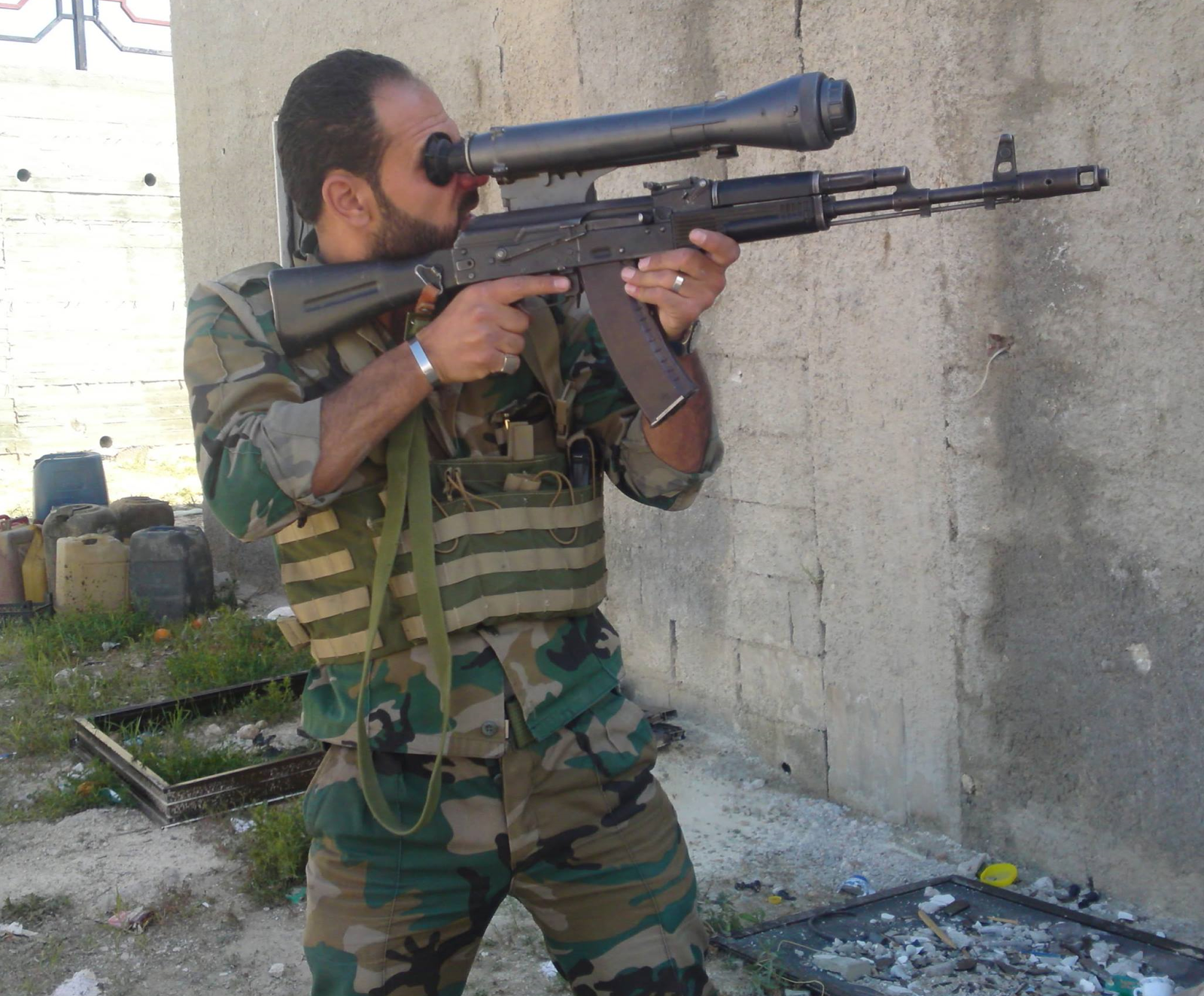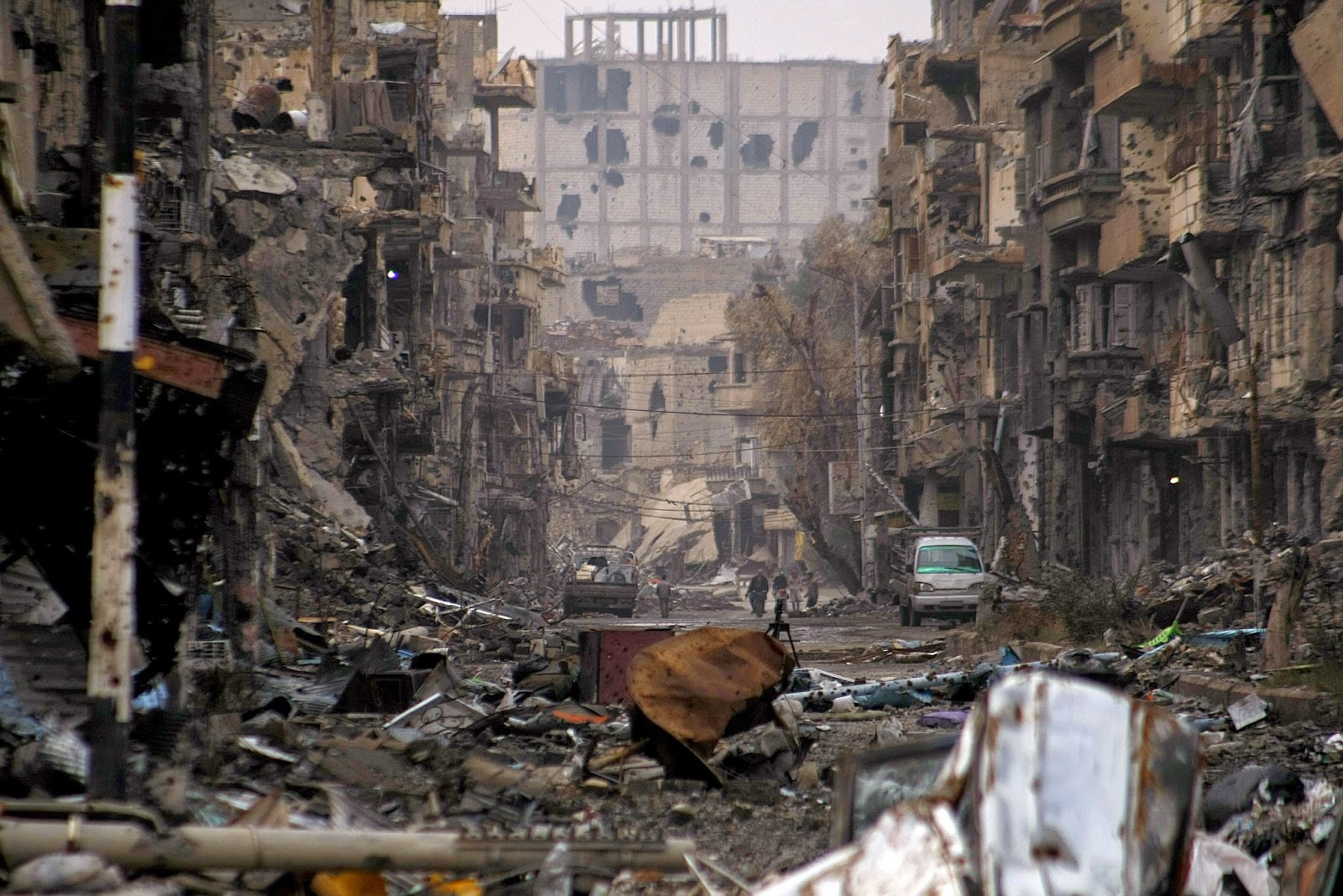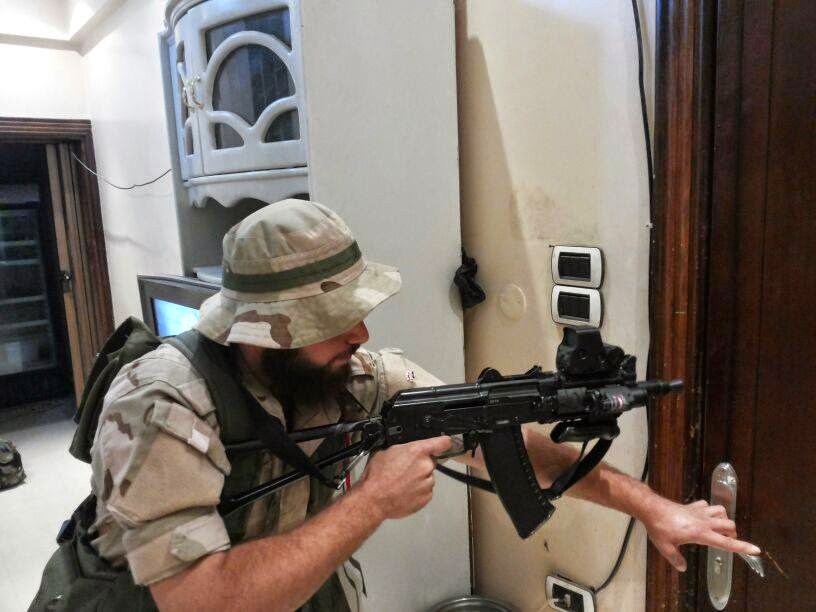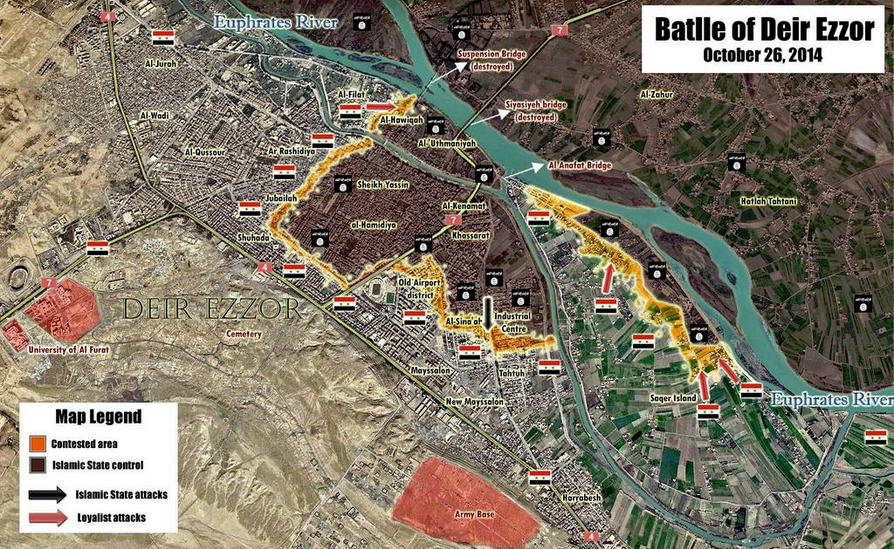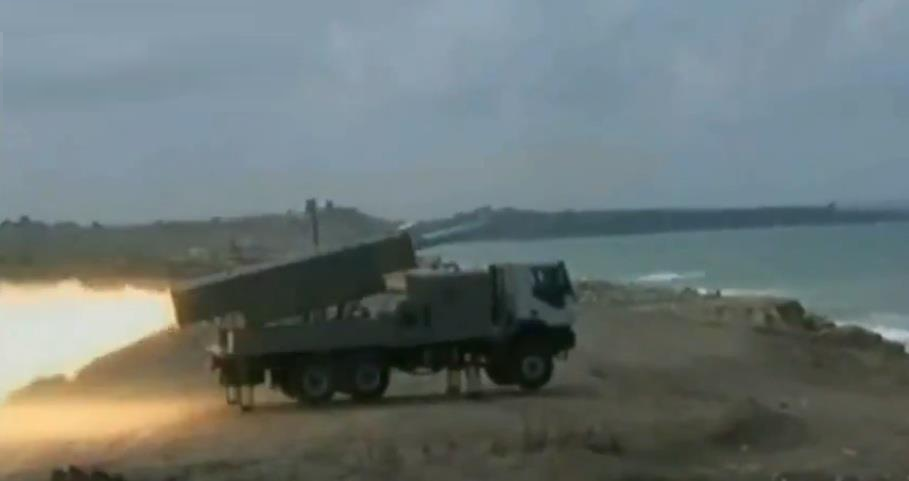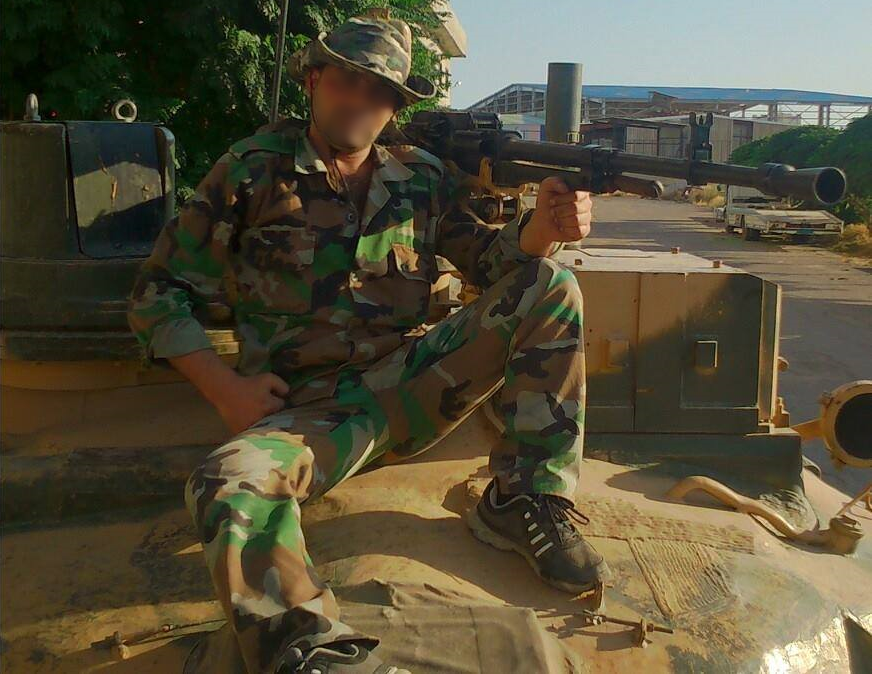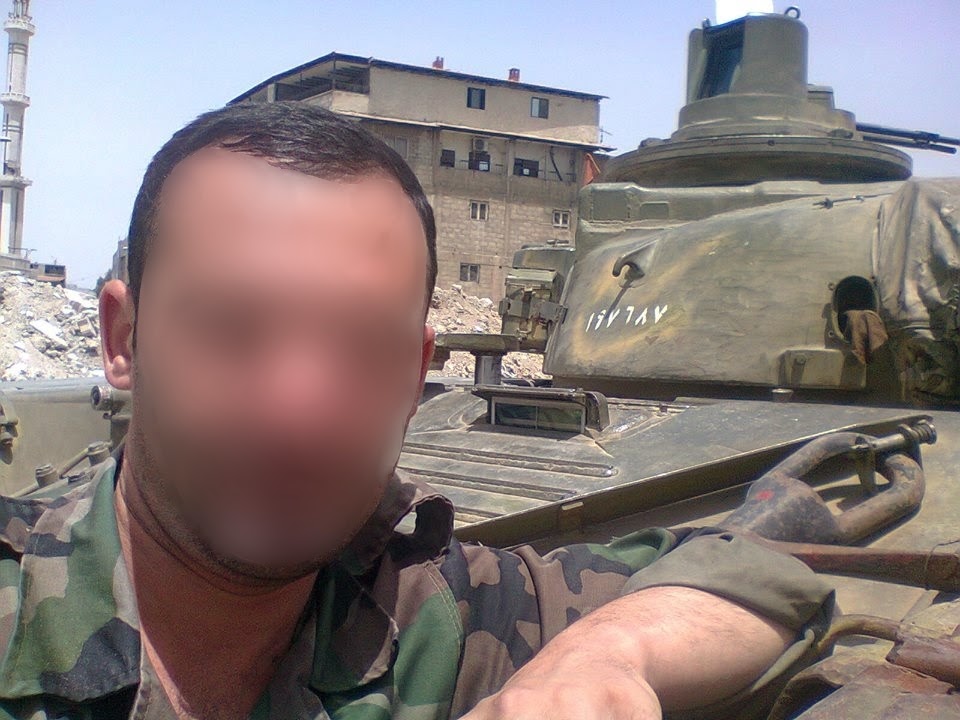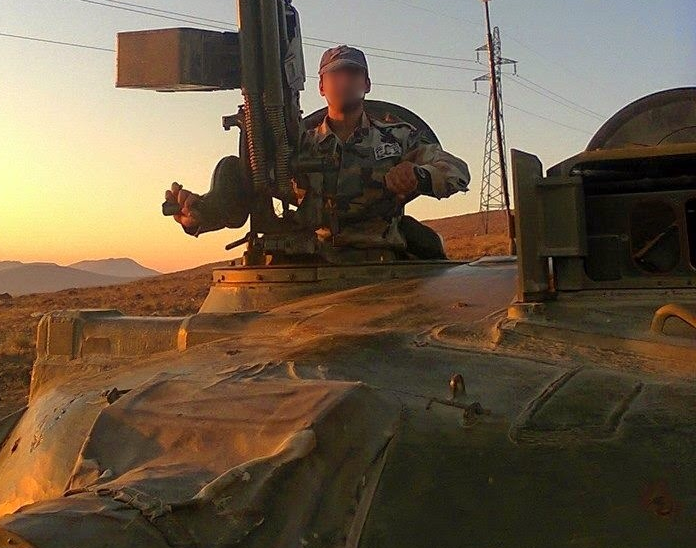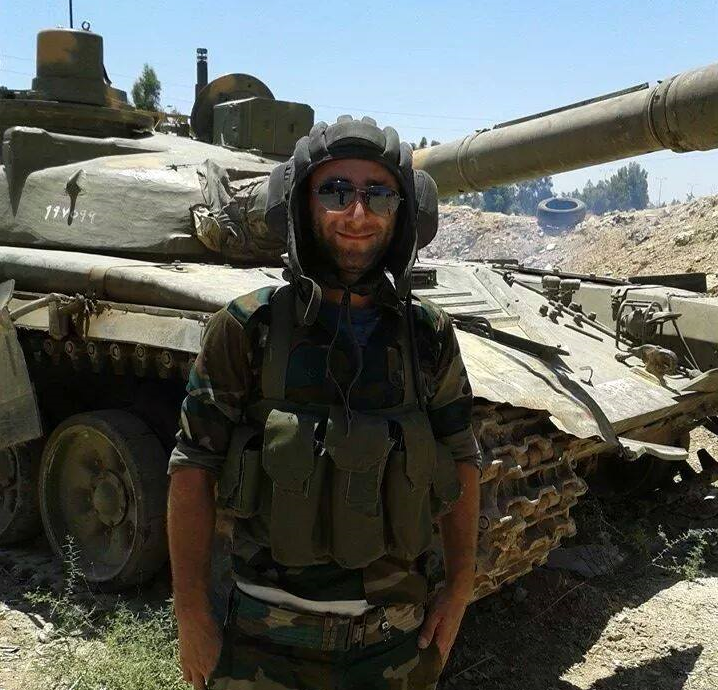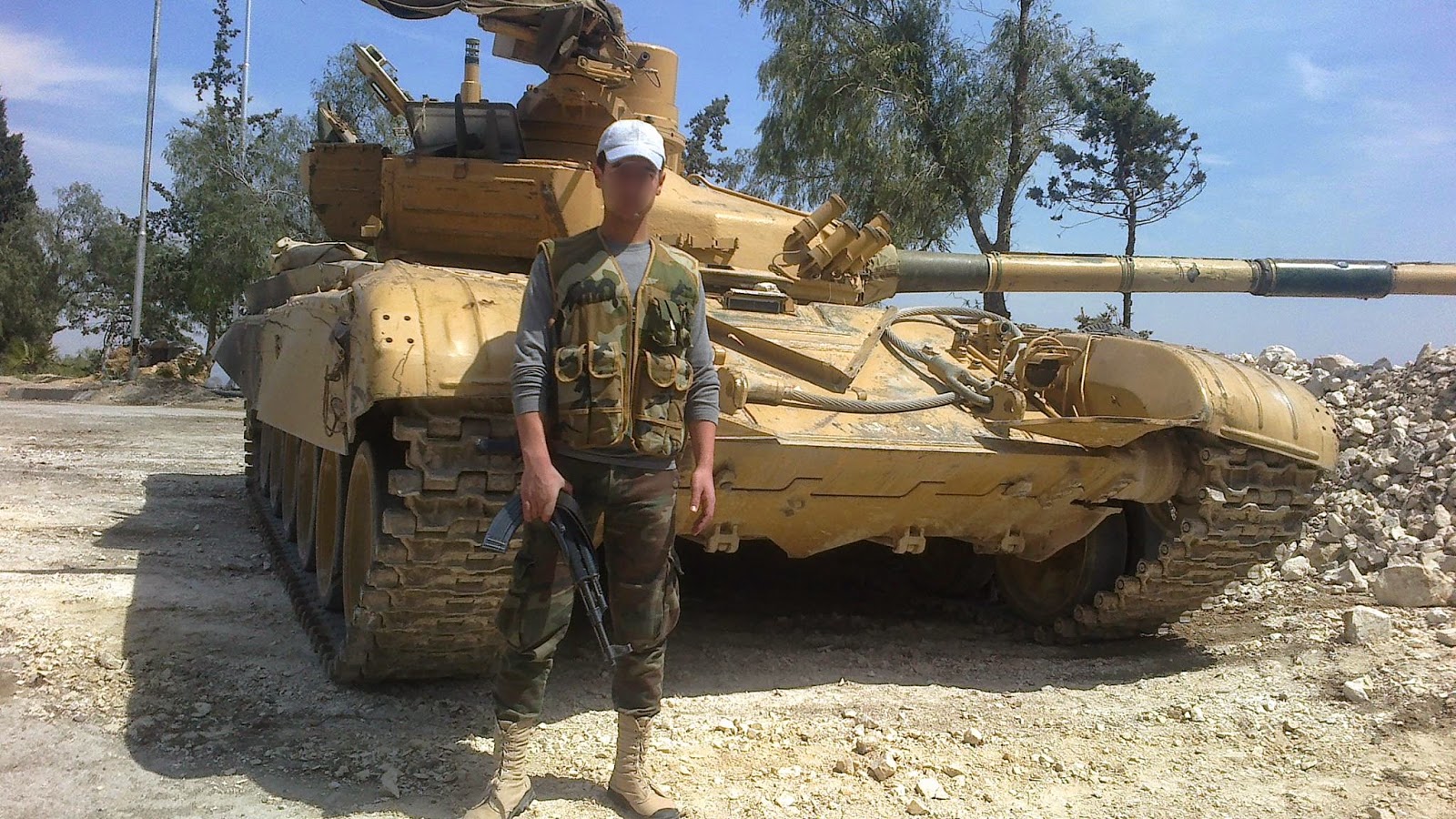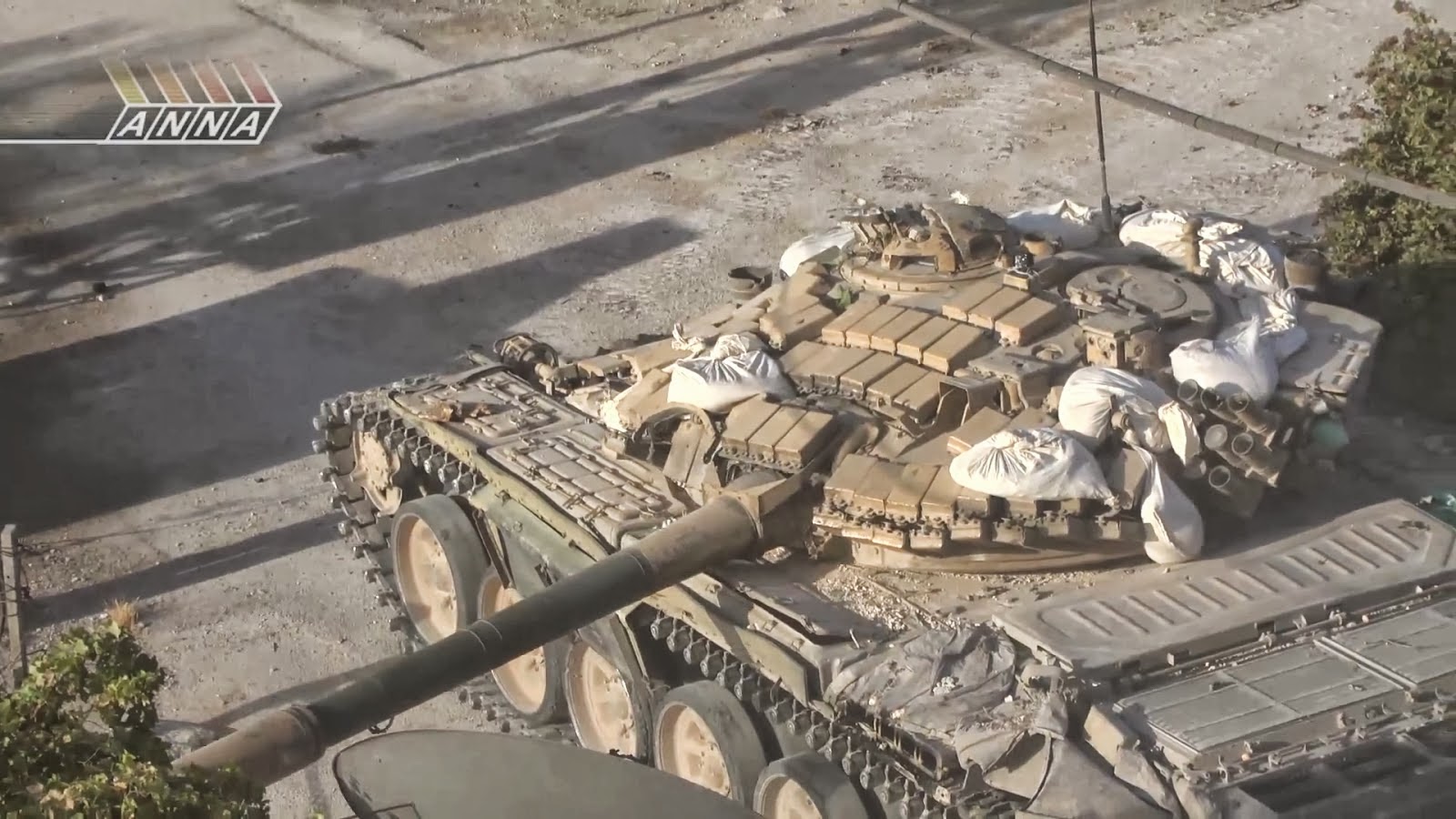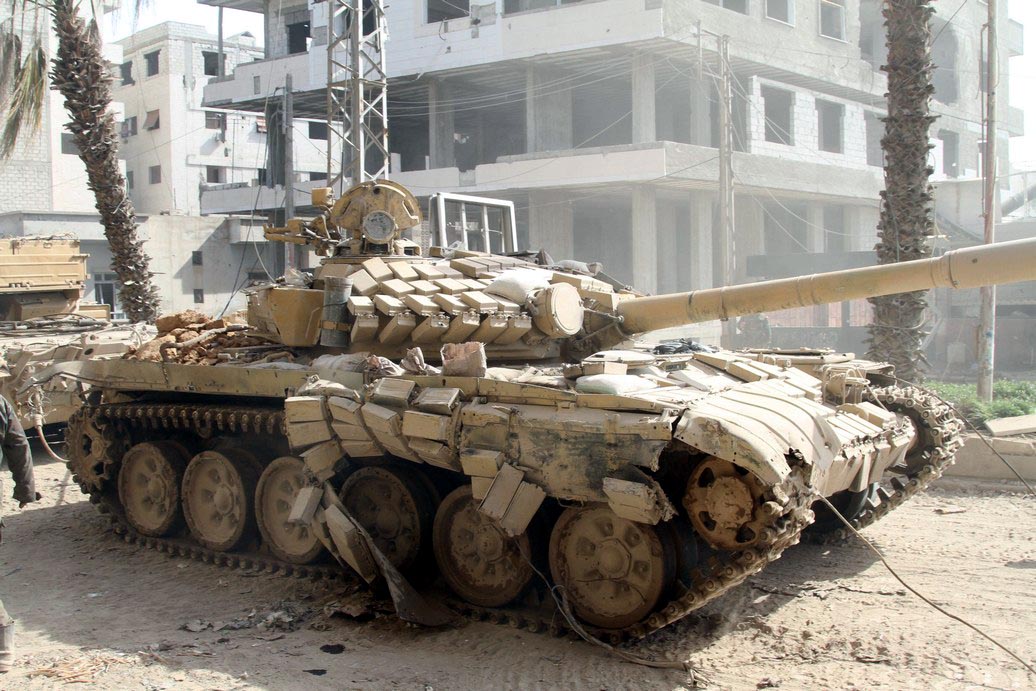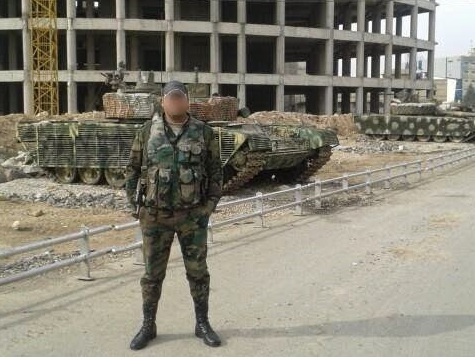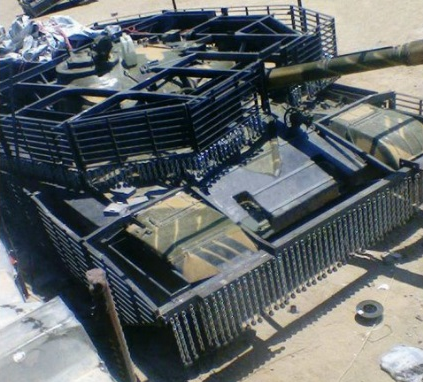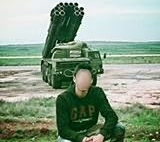The T-72, after the T-55 the most prolific tank series of the post-World War II era with an estimated production run of up to 30.000 vehicles. In Syria, the tank largely owes its fame due the participation in the Battle of Darayya, which was extensively covered on
camera, and the large amount of
videosshowing the turret fly off due to an internal explosion after getting hit by a RPG. As a result, both
the highest flying T-72 turret and the
most destroyed T-72 were recorded inside Syria.
Nonetheless, it remains at the forefront in the Syrian Civil War and undoubtedly is Syria's most popular tank, so much even that a captured T-72 is considered as a sort of treasure by the rebels. Around 300 are still believed to be operated by mainly the Republican Guard and the Syrian Arab Army's elite 4th armoured division.
Although it's commonly believed Syria operated around 1500 T-72s, Syria actually acquired just over 700 T-72s in three (or technically four) batches. The first batch consisted of around 150 T-72 'Urals' ordered from the Soviet Union and delivered in the late seventies, a total of 300 T-72As delivered in 1982 make up the second batch and an order for 252 T-72M1s placed in Czechoslovakia was only partially completed when the country was separated into two. While 194 examples were already delivered by Czechoslovakia in 1992, the order was continued by Slovakia and the remaining 58 T-72M1s were delivered in 1993.
[1]The T-72 'Ural', seen in the image below, was released for export in the late seventies, and apart from Syria, nations like Algeria, Iraq and Libya also received the type. Especially Syria was keen to field the T-72 after the poor performance of the T-62 during the 1967 and 1973 war. The combat history of the T-72 in the 1982 Lebanon war remains subject to debate, with sources claiming everything from the T-72s destroying M60s to Merkavas and yes, even the U.S. M1 Abrams.
[2]The most widely accepted theory involves the majority of the T-72s being held back in Syria as a strategic reserve, and that only a few T-72s did clash with M60s and Israeli Magach derivatives near Rashaya. Most sources agree the T-72s performed well, and one officer was subsequently decorated for his achievements with the type.
[3]Hafez al-Assad is even said to have made the famous quote of calling the T-72 'Ural'''the best tank in the world''. As a token of appreciation, Hafez donated (or more conviently traded) a captured Magach-5 to the Soviet Union, which was extensively tested here. Especially the Blazer explosive reactive armour (ERA) found on the Magach-5 was of great interest to the Soviet Union.
Syria greatly benefitted from this arrangement, as it subsequently received the first of a total of 300 much improved T-72As in 1982. What makes Syria receiving this tank so special is that the T-72A was never cleared for export by the Soviet Union, with even the most trusted Warsaw Pact countries receiving the downgraded T-72M1 instead. The first country outside the former Soviet Union to receive T-72As was Hungary in 1996, which acquired them from Belarus fourteen years after Syria received theirs!
Syria's T-72As, produced only one year before they were delivered, came directly from Soviet Army stocks. In Syria, these tanks became known as T-82s, with 82 referring to the year of delivery. The use of this designation continues even today, and neither T-72A or T-72AV was ever used to refer to this tank in Syria. To avoid confusion, only the foreign designations are used in this article.
The T-72A can be discerned from the T-72M1 by the presence of
anti-radiation lining over its turret, as witnessed by the T-72AV without ERA seen below.
The 300 T-72As were split between the Republican Guard and the 4th armoured division. The T-72s operated by the Republican Guard were always seen in a desert livery, while the T-72s of the 4th armoured division were usually plain green, which operated alongside a limited amount of 'desert' T-72s.
Numerous BREM-1 armoured recovery vehicles were also acquired mainly for the Republican Guard, and all remain in widespread use today. In fact, the BREM-1s is the only type of ARV that is actually used as an ARV in Syria, with other ARVs either stored or used as gun-platforms.
Apart from acquiring T-72As, Syria also received the more modern 3BM-44 anti-tank round for the T-72's 125mm cannon. Believed to have never been exported to any other country under Soviet influence, it remains in use alongside the older 3BM-23 anti-tank round. The complete ammunition loadout of a standard Syrian T-72 in Syrian service can be seen below.
All of Syria's T-72As were later upgraded to AV standard, aimed at increasing the T-72A's protection against RPGs by the installment of Kontakt-1 explosive reactive armour blocks (ERA). Opposed to the T-55MV upgrade, which happened in the Ukraine, the upgrading of the T-72As took place in Syria. The Kontakt-1 ERA was bought from one of the former Soviet Republics (believed to have been Ukraine) and was supposedly installed by Armenian contractors. The upgrade to AV standard didn't change anything to the designation of the T-82 however.
Although almost all of the tanks got their Kontakt-1 ERA installed the way it was intended, at least some of the 'T-72AVs' can be seen with a different installment of the ERA blocks on the turret, a contraption likely originating from one of the Armenian contractors responsible for installing the ERA.
The 252 T-72M1s were the latest additon to the Syrian tank fleet, and although inferior to the T-72AVs, they are Syria's most newest tanks, having rolled out of the factory over ten years later than Syria's T-72AVs. As most were delivered in 1992, they are sometimes referred to as T-92s by Syrians.
Yet the original designation of T-72M1 also remains in use in Syria, resulting in some confusion around the Syrian designation system. To add to all the confusion, the T-72 'Ural' is also believed to have acquired an indigenous name, which would likely be T-79.
Although all were believed to have been distributed to units within the Syrian Arab Army, most can now be found under the command of the Republican Guard in an effort to replace the battered T-72AVs it lost over the recent years.
A large part of the T-72M1 fleet was originally slated to be upgraded to what was believed to be T-72M1M standard by Russia at the start at this decade. However, this plan was abandoned after the start of the Civil War alongside several other ambitious modernisation programmes for the Syrian military.
The T-72M1's hull seen below provides a good comparison between the different roadwheels of the T-72M1 and T-72 'Ural'. The green camouflaged roadwheel was taken from a T-72 'Ural' after this particular T-72M1 got damaged in battle. This T-72M1 also features improvised armour additions.
In agreement with Galileo Avionica of Italy, 122 T-72s were upgraded with the TURMS-T (Tank Universal Reconfiguration Modular System T-series) fire-control system (FCS) between 2003 and 2006.
[4]Strangely enough, instead of upgrading 122 of its most modern tanks, the T-72AV and T-72M1, Syria opted for dividing the TURMS-T systems between its T-72 'Urals', T-72M1s and T-72AVs instead. The exact reason for this remains unclear even today. It might have something to do with the units that were slated to be equipped with T-72 TURMS-Ts, that could haveaccidentally brought their T-72 'Urals' forward to be upgraded instead of their more modern incarnations.
The quality of the TURMS-T installment varies on every tank, but seems to be of lesser quality on the T-72 'Urals'.
The TPD-2-49 optical rangefinder found on the T-72 'Ural' was closed up as opposed to removing it altogether, which would have left a hard to fill gap in the armour, not to mention the amount of needless work it would have cost.
![]()
Surprisingly, T-72 'Urals'
and T-72M1s were also the only ones sighted with the panoramic sight also belonging to the TURMS-T system. As upgrading all of its 122 T-72s with the panoramic sight was deemed too expensive, only a limited amount of T-72s received the system. A special mount ensured the T-72s remained capable of carrying the 12.7mm NSV. The gunner's sight originally used on these tanks was removed as it became redundant and was now blocking the TURMS-T system.
![]()
![]()
![]()
Interestingly, all the TURMS-T equipped tanks in Syria got the 'S' added to their designation, resulting in T-79S/T-72S, T-82S/T-72AVS and T-92S/T-72M1S. While this may seem confusing at first hand, the 'S' stands for Saroukh (صاروخ) meaning missile, indicating all are capable of launching the 9M119(M) guided anti-tank missile through their barrel. 1500 of such missiles were believed to have been acquired in 2005. None have been seen in captured T-72 TURMS-Ts however, likely because the need for 9M119(M)s in the Syrian Civil War is minimal and all remain stored in depots.
[5]Of the once 122 strong TURMS-T fleet, some one hundred still remain in service. As these tanks are by far the most modern examples found in Syria, most are held back on Mount Qasioun near Damascus, the Republican Guard's base. Some of the T-72M1s equipped with the panoramic sight were tasked to monitor rebel activity in the villages around Mount Qasioun, as seen with the T-72
here, facing the village of Moadamiya.
Some TURMS-T equipped T-72s also saw heavy action in and around Damascus in the early days of the Syrian Civil War, during which a number were lost. Some were still
seen in and around Damascus in 2013, but their usage in Damascus appears to be minimal. A few TURMS-T equipped T-72s belonging to the 4th armoured division were deployed to checkpoints throughout the country, and at least two were
destroyed at the
Jassim National Hospital near Nawa.
Out of around 700 acquired T-72s, some 300 are still believed to be operational. Rumours of more T-72 deliveries in the past years continue until this day, and although larger numbers of green camouflaged T-72AVs continue to appear, this can't be verified. With sufficient numbers of T-55 and T-62s at hand, and tanks being superseded by truck based anti-aircraft guns used for fire-support, there's no real need to acquire new batches of T-72s for use in the war yet. With Syria's limited budget for the acquisition of new weaponry, UR-77s and BM-30s have absolute priority.
Lots of T-72s were destroyed while used as battering rams charging through cities in the early days of the war. The usage of advanced RPGs such as the RPG-29 and M79 Osa by opposing forces didn't work to the T-72's advantage either. Subsequently, the T-72 fleet suffered the largest relative losses compared to the T-55 and T-62 fleet.
While the use in Darayya looked great on camera, it resulted in unnecessary losses with questionable results. The insurgency here was only suppressed after infantry was deployed into the now destroyed neighbourhood.
The tank was also used in situations where a simple T-55 or T-62 would also have sufficed, again leading to unnecessary losses. The sighting of T-72 'Urals' is now especially getting rare. The T-72M1 is now the most numerous T-72 in Syrian service
, followed by the T-72AV.
Nonetheless, new personnel is still training on the T-72s. The high attrition of tank crews and the need for skilled mechanics to quickly repair battle-damaged T-72s is now higher than ever.
The T-72 has meanwhile seen use on every front. Deir ez-Zor, previously only home to T-55s, saw numerous T-72s operating here because of the
arrival of the Republican Guard's 104th brigade. Some TURMS-T equipped T-72AVs are now also attached to Suqur al-Sahara (Desert Falcons), and saw use against the Islamic State near the Shaer gas field.
A limited number of T-72s also operate around Aleppo. All of these belong to the 4th armoured division and operate alongside BREM-1 ARVs. They mainly operated around the neigbourhood of
Al-Layramoun in late 2013.
Due to their heavy usage, many T-72AVs were soon left without their Kontakt-1 covered side skirts. Indeed, this was one of the complaints of tankers of the Republican Guard. An interview with one of them can be seen
here. One hit by an RPG often results in the whole side skirt falling off, leaving the tank with almost no protection on this side. Some T-72AVs were subsequently used as a source for Kontakt-1 blocks, but Syria might still receive limited quantities of such blocks from one of the former Soviet Republics even today.
Various other groups also continue to operate the T-72, of which the Islamic State is by far the largest operator with thirteen T-72 'Urals' and six T-72AVs
in operation. Six T-72 Urals and three T-72AVs joined the ranks of the Islamic State after Liwa Dawood, the largest operator of tanks of all the rebels at the time, defected to the Islamic State.
At least one T-72 was later modernized by the addition of new mud guards, side skirts and different ERA layout, allowing for a wider coverage on the tank's side skirts. This particular T-72 participated in the assault on
Brigade 93, in Northern Syria.
Another notable operator is Jaish al-Islam, which bought two T-72s from a corrupt officer within the Army's elite 4th Armoured Division and captured at least another six, of which one T-72M1 TURMS-T. Jaish al-Islam's usage of its T-72s can be seen as quite revolutionary compared to other rebel groups in the Syrian Civil War, being the only group in Syria which operates various types of armour and infantry in a mechanized force, fully exploiting their potential. At least one 'T-72AV' was
upgraded with additional armour on its glacis plate and rear by Jaish al-Islam.
Liwa Dawood, which later defected to the Islamic State, is claimed to have the dubious honour of participating in Syria's second tank duel, footage of which can be seen
here. The duel resulted in the complete destruction of a T-72AV (the remains of which can be seen below) by a T-72 'Ural' from Liwa Dawood. Although the presence of numerous ATGMs in the area could soften the tank duel claim, the T-72AV seems in a great hurry to leave the area, possibly because it became aware of the T-72 Ural.
The poor protection of the ammunition almost always results in a fire and explosion inside the turret followed by the turret being detached from the hull. As the crew is sitting right on top of the 125mm shells, it almost always results in their death.
Most Syrian T-72s lost their 12.7mm NSV heavy machine gun in the course of the Civil War. As these guns require the commander to leave the safety of the turret, thus leaving him greatly exposed to gunfire, they rarely saw use and were often dismounted to be mounted on pickup trucks instead.S ome of the NSVs were subsequently used to cover T-72s from RPG teams after being handed over to soldiers operating in the same theatre as the T-72s. This tactic is mostly seen in Jobar.
A limited amount of T-72s were also upgraded by a protective shield for the commander to aid when operating the NSV heavy machine gun. These shields likely came with the Kontakt-1 ERA blocks also purchased. One of such shields can be seen below.
To address some of the armour weaknesses, several programs have been initiated to improve the T-72's protection against RPGs and ATGMs. These programs were first witnessed on the Republican Guard's T-72AVs, most of which received slat armour filled with bricks. Simple bricks were sometimes also used to replace lost Kontakt-1 blocks, the actual combat value of which is highly questionable.
While these early upgrades were very rudimentary and varied between each tank, Syria has now implemented a nation-wide upgrade program for its precious T-72s. At least three major variants are known, which can be further divided into numerous subvariants.
The first upgrade consists of several pieces of metal alligned around the turret and one large plate of metal on each side of the tank strenthened by shell casings from the T-72's 125mm gun. In some cases, sandbags are also seen around the turret.
The second upgrade includes the installment of slat armour on the glacis plate, turret, hull and the back, providing a 360 degree coverage. This type of armour is only seen on TURMS-T equipped T-72 'Urals' operating in and near Aleppo.
The third upgrade, by far the most rigorous and effective, was first seen in late August, 2014. The consisted of the installment of additional armour on the T-72M1's side skirts, glacis plate and around the turret, further reinforced by slat armour and metal chaines, also providing a 360 degree coverage.
Some examples were immediately rushed into combat in Jobar, where at least two were destroyed.
[6][7] Other examples see service in Aleppo. However, the actual combat performance of the armour package remain unknown. It is expected more T-72s will receive this armour package.
At least one TURMS-T equipped T-72M1 also received such armour additions, albeit in a slightly different configuration than seen otherwise.
The T-72: Its combat successes are open to debate, its legacy is indisputable. It remains both loved and feared by friend and foe alike. Whatever the outcome of the Civil War, this tank has left its imprints on both the Syrian battlefield and battlefields across the world, and will continue to do so long after it has ended.
Recommended ArticlesSyria's Steel Beasts: The T-55 Syria's Steel Beasts: The T-62 Why Israel is bombing Syria and getting away with it

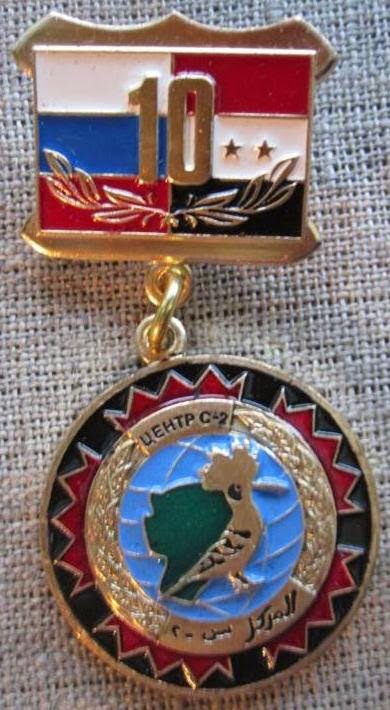

















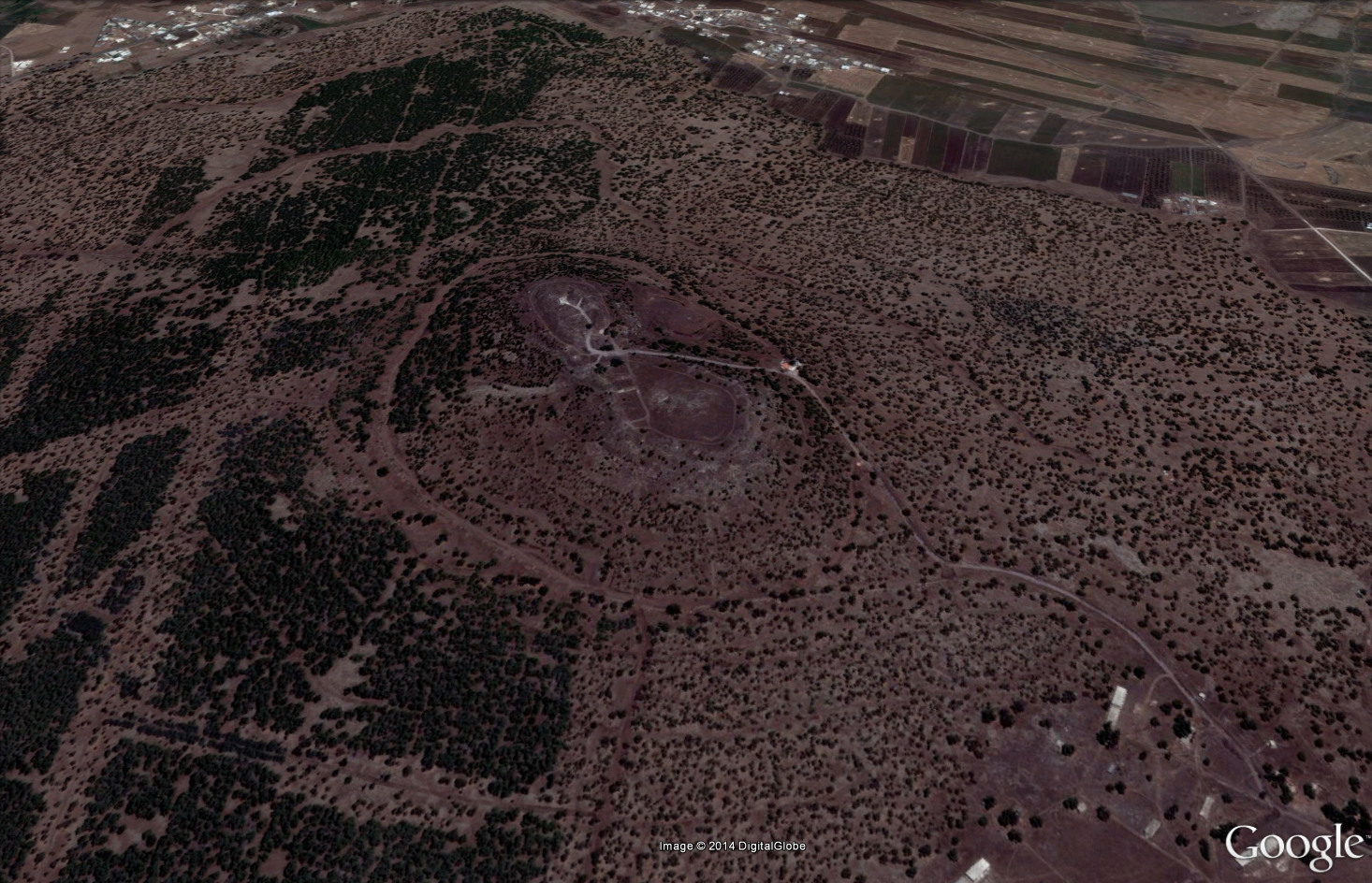
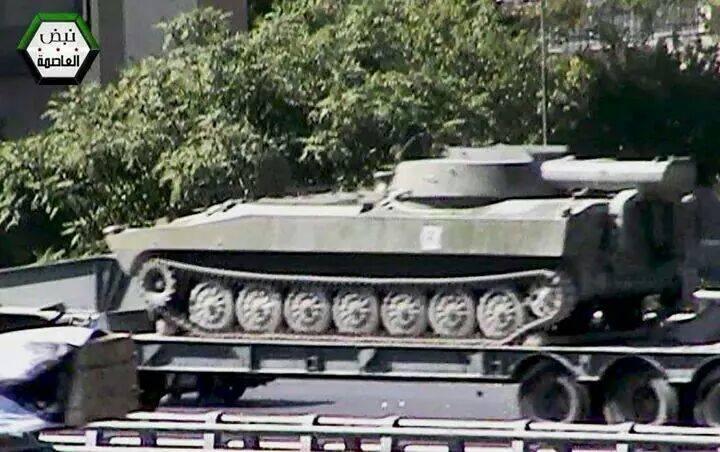






















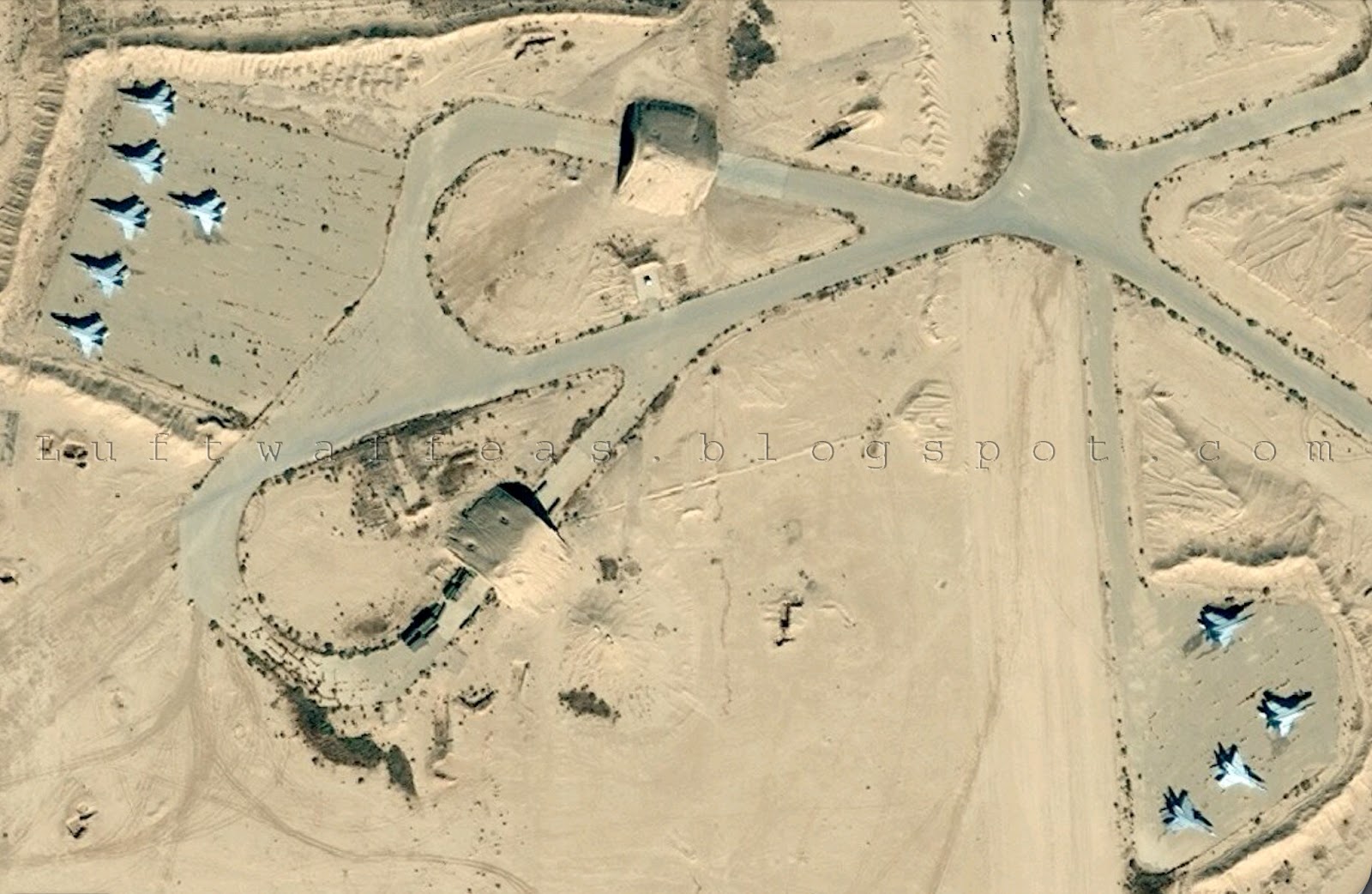











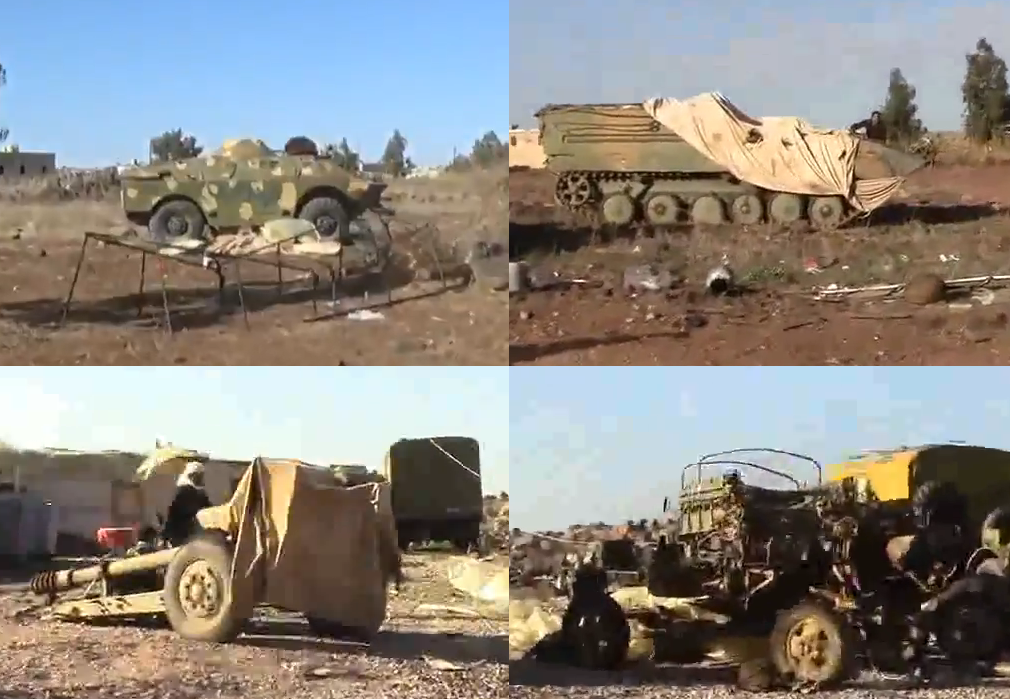




 4 VT-55KS:
4 VT-55KS:  2 MAZ-6317:
2 MAZ-6317: 


 3 I-RAAD:
3 I-RAAD:  4 HOT:
4 HOT: 














 3 Armoured bulldozers:
3 Armoured bulldozers:  19 Otokar Akrep:
19 Otokar Akrep:  2 Reva:
2 Reva: 




